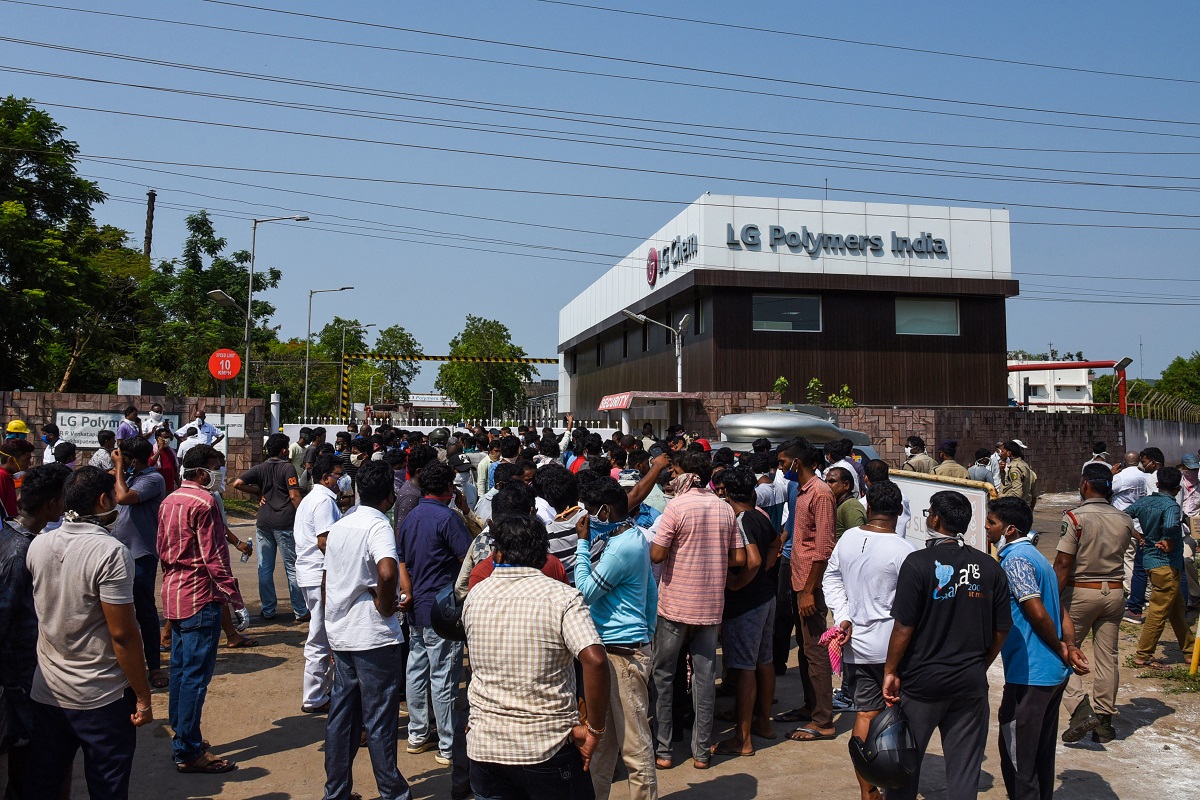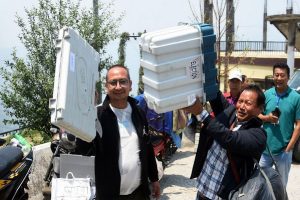Agas leak in Visakhapatnam district in the early hours of 7th May has led to the deaths of 11 people and hospitalization of more than a thousand. According to the district authorities the gas was confirmed to be Styrene or Vinyl Benzene. As an intermediary also known as PVC gas, it is subsequently used as PVC for the manufacture of insulation material, plastics ,rubber, pipes, fibreglass and in packaging industry.
According to WHO, it is the twentieth most used chemical in the world. It is to the credit of the district authorities and the NDRF, who were quick to react ,which perhaps explains lower fatalities. Around 500 kg of chemicals were airlifted from Gujarat to neutralize the gas well in time. Separately, with the direct intervention of the United Nations, the bar for the investigation of the Vizag gas leak case has not only been raised but has also been virtually internationalized.
The spokesperson for Antonio Guterras, Secretary General of the UN, stated on 7 May: “We obviously send our condolences to the victims and hope for the quick recovery of those who have been impacted. These kinds of incidents should be fully investigated by the local authorities”. While detailed investigations would undoubtedly be undertaken, prima facie it appears that the protocols necessary for re-commencing operations after the lockdown entailing a closure of over 45 days were not followed.
When the accident took place during the early hours of the morning, only a handful of casual workers were present. Elements of negligence at multiple levels are more than obvious in the entire affair for which evidence would have to be immediately secured and collected in right earnest. While the plant would have been sealed, a team of experts headed by a scientist from CSIR needs to be constituted immediately to go into various aspects of this matter.
According to scientific research approved by the US Environmental Protection Agency and published in a top scientific journal, Environmental Health Perspectives, chronic exposure to Styrene has been linked to occurrence of neurological and behavioural deficit. This may eventually result in decreased performance including delayed reaction time and visual disturbances, hearing loss and possible peripheral neuropathy. The International Agency for Research on Cancer ( IARC ) has determined that Styrene is a possible carcinogen and can cause cancer on prolonged exposure.
In this context, let us not repeat the mistakes of Bhopal where even after 35 years of the disaster, scars of the tragedy have not yet healed fully. The chain of suffering of the people has continued unabated over the generations as some genetic deformities have been reported in some newborns. Bhopal has been listed as the world’s biggest manmade environmental disaster in which thousands of people died and many more suffered permanent damage or a genetic impact.
Responses of our entire system on the Executive , Legislative and even the Judicial side were found to be inadequate to meet the expectations of the people. Whatever was done by way of relief was too little as compared to such incidents worldwide. This plant from 1961 onwards was run by Hindustan Polymers which later merged with UB Group in 1978. Subsequently LG Chem of South Korea took over Hindustan Polymers and renamed it as LG Polymers India Pvt. Ltd. in July 1997.
It is understood that after the lockdown, permission to re-commence operations was obtained a couple of days ago on phone. The factories inspector and the pollution control board had neither inspected nor understood the sensitivity of such a plant re-commencing operations without adequate precautions. This incident can be a wakeup call for the government agencies concerned as well as the manufacturers since a large number of them would be preparing to re-commence operations after the lockdown is relaxed.
Particularly after the Bhopal disaster, several pieces of legislation were enacted beginning with the Environment (Protection) Act 1986 to the Public Liability Insurance Act 1991. According to the relevant rules framed by the Government , Styrene is classified as a hazardous and a toxic chemical. This should naturally have required a greater degree of supervision and monitoring of operations. Some of the major laws and regulations which appear to have been overlooked in the Vizag case are: Environment (Protection) Act 1986 and rules framed thereunder; Hazardous Waste (Management, Handling and Trans Boundary Movement) Rules 1989 and rules framed thereunder , Manufacture Storage and Import of Hazardous Chemical rules 1989 etc.
Despite a plethora of rules and regulations there are certain aspects which indicate a weakness in our legal system in dealing with such cases. During the discussion in Parliament on the Civil Nuclear Liability Act 2010 it was mentioned by Mr Arun Jaitley, leader of the Opposition in the Rajya Sabha that “ We have a sad and unfortunate experience of the Bhopal gas leak. This law deals only with nuclear incidents. If there are incidents and accidents which are not on account of a nuclear incident but because of which a large number of casualties and damage does take place then the victim has to go to a civil court. It was also urged that there ought to be a similar law which could deal with such eventualities expeditiously in case of non-nuclear incidents.”
These were ominous words whose importance one realizes only after 10 years and this tragic incident at Visakhapatnam. Parliament can still amend the existing law or legislate a fresh enactment to fill up this major lacuna. While the Chief Minister has already visited the spot and the state government is undertaking necessary relief measures there still might be individual compensation seekers whose expectations would have to be suitably addressed.
The number of law suits filed in India and abroad, after the Bhopal tragedy was so large that a special enactment had to be undertaken and all such matters were transferred to a single judicial forum which, however, failed to deliver complete justice. So let us not repeat the mistakes of Bhopal and ensure adequate compensation of international standards to the victims as well as compensation for the damage caused to the environment.
(The writer is a former Governor and a Sr. Advisor at the Pranab Mukherjee Foundation)










